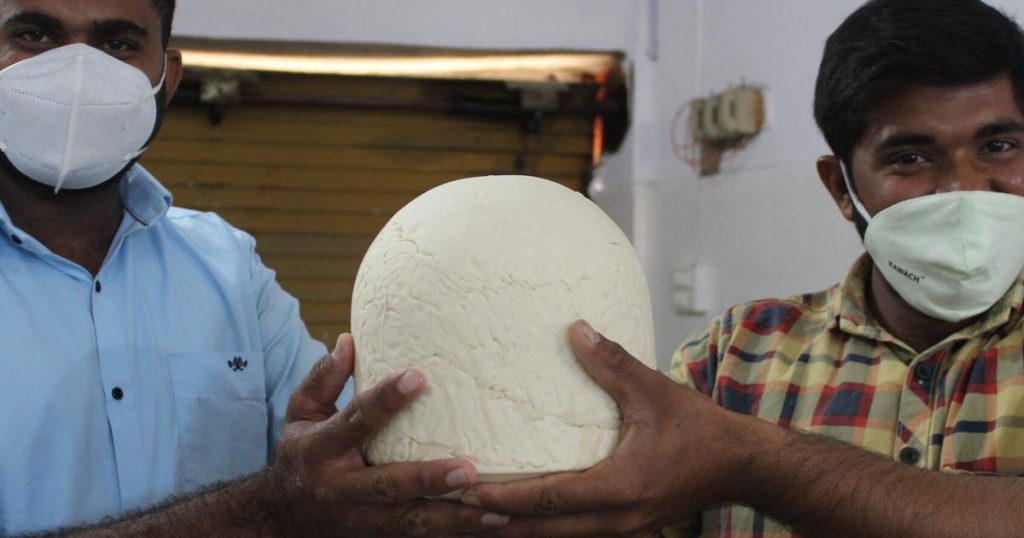Articles
Camel, goat cheese find niche but growing market in India
At a cheese-tasting event in Chennai recently, one of the cheese varieties on display was marinated feta from fresh goat milk. It was made in a small cheese-making unit in Sayla, a village in the Kachchh district in Gujarat, by two young men of the maldhari or pastoral community, Arpan Kalotra and Bhimsinhbhai Ghangal. Panchal Dairy, a venture started in January 2022 by Kalotra and Ghangal, is one of a motley group of artisanal cheesemakers who are spearheading a niche yet steadily growing artisanal cheese market in India.
Panchal Dairy makes 10 varieties of cheese – chèvre, halloumi and marinated feta from fresh goat milk; aged goat-cheese varieties tomme and tymsboro; and ricotta, pecorino and manchego in the specialty sheep-cheese variety. Since goat milk is available only for seven months a year, aged cheese is an alternate option for the rest of the months.

Artisanal cheese stands out
India’s cheese market was valued at Rs 71.3 billion in 2022 and is projected to grow to Rs 262.6 billion by 2028, exhibiting a growth rate of 24.06%, according to the market research agency IMARC. Aakriti Srivastava, the founder of Bahula Naturals which makes camel milk cheese in Rajasthan, said the CAGR (compound annual growth rate) of artisanal cheese “shows an upward trend of 22%”. She dedicated the growing interest for artisanal cheese largely to the upward mobility of the people in the cities.
Camel Charisma located in the Pali district of Rajasthan is another initiative to promote camel milk products including artisanal cheese, thereby providing income generating opportunities to camel-herding communities. Ilse Kohler-Rollefson, a camel researcher for more than three decades and the force behind this initiative, said that their products have been finding traction in the market.
“We had the Godwar Camel Cheese Festival in November 2022 in support of the Raika (a community) camel breeders. The chef of Udaipur’s Lake Palace hotel who attended the event included camel milk cheese on their menu,” she said. The Taj hotel group in Udaipur and the Jodhana properties in Jodhpur are other major clients of the brand. Kohler-Rollefson believes that the increasing demand for artisanal cheese in India has the potential to make a difference to the herder community.

Break from convention
Artisan or artisanal cheese is handcrafted and made in small batches unlike processed cheese that is made in bulk, using machines. The artisanal cheese could be soft cheese or aged ones, ripened under appropriate conditions for unique taste and flavour. The archeological finds in Kotada Bhadli in the present day Kachchh shows evidence of dairy processing during the Indus Valley civilisation. But unlike other dairy products such as butter or ghee, cheesemaking is not a traditional practice of the pastoral communities in India, barring a few exceptions like churpi, made from yak milk in the Himalayan region and in northeast India.
“Cheesemaking requires an important component, rennet, which helps in milk coagulation. Pastoralists don’t have access to that. So, although they use different methods to increase the shelf life of milk, cheese is not one of them in the strict sense of the word,” Srivastava of Bahula Naturals told Mongabay India. Traditionally, Rajasthan’s Raika community, who are camel breeders, did not sell camel milk. Madhavram Raika, a pastoralist from the community, explained that this was because they believed that the camel was created by Goddess Parvati and Lord Shiva by infusing its soul and the Raikas were entrusted with the responsibility of taking care of the animal by the gods. “For generations we have grazed herds of camels on the grazing land accessible to us, and would go into the forests of Kumbalgarh during the monsoons,” he said. This was before Kumbalgarh was declared a wildlife sanctuary. The camel milk was consumed by the family and the animal would help in the field or carry goods. When nomadic pastoralists moved from one place to another, milk was stored in vessels and certain milk products were made which increased its shelf life. For instance, granular pieces of dairy left after straining the stored milk, something like cottage cheese, would be mixed with bajra (pearl millet) to make rotis. These would last longer in the journey and be consumed by all.
Hanwant Singh Rathore, director of Lokhit Pashu Palan Sansthan, a body of camel breeders in Rajasthan, recounted that hardly anyone sold camel milk until 1994. “However, with changing situations, like fewer grazing grounds for camels and the families’ sustenance which in turn affected the welfare of the animals, led us to explore different livelihood options. We started convincing others that camel milk could be a viable source of income,” Rathore said.



